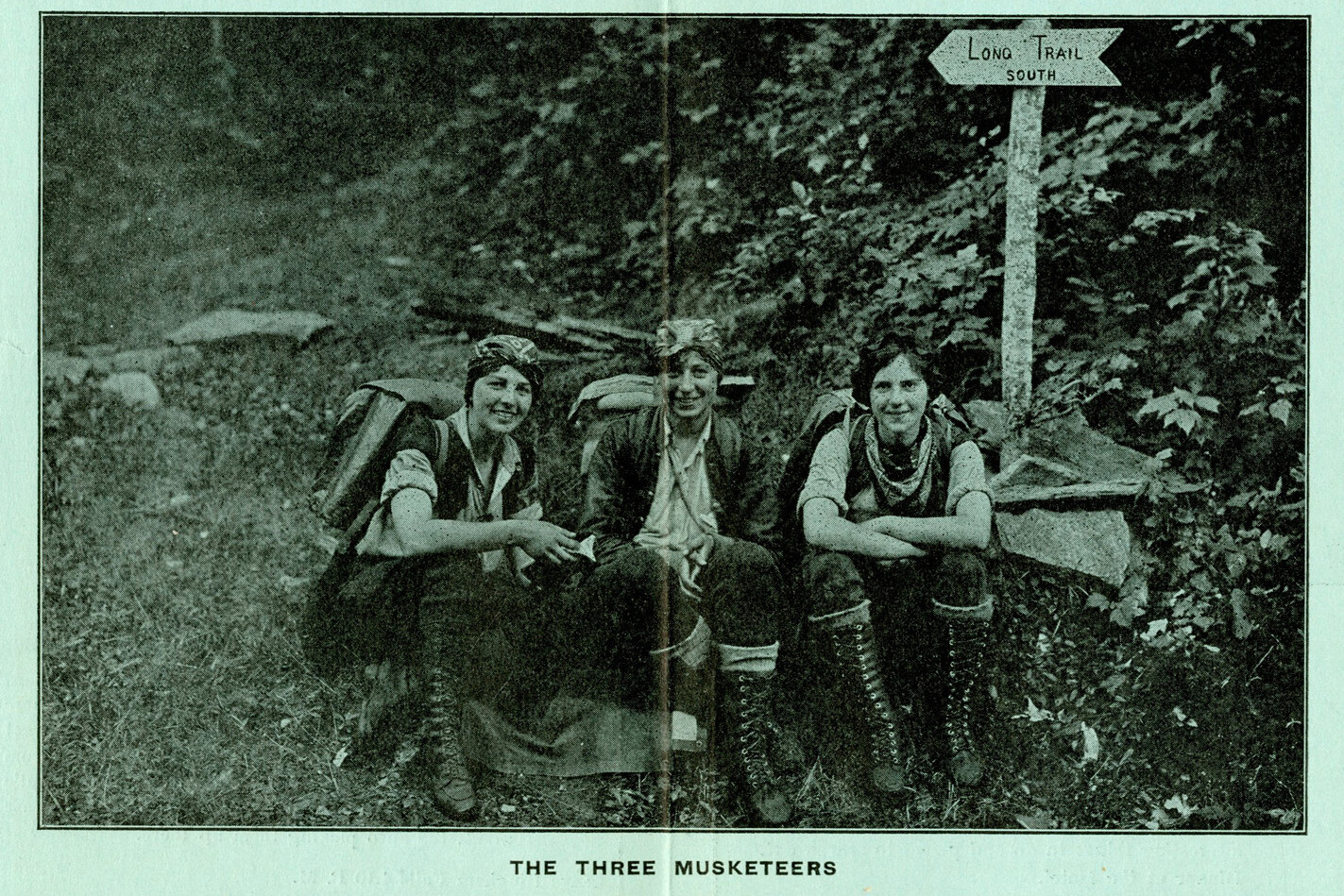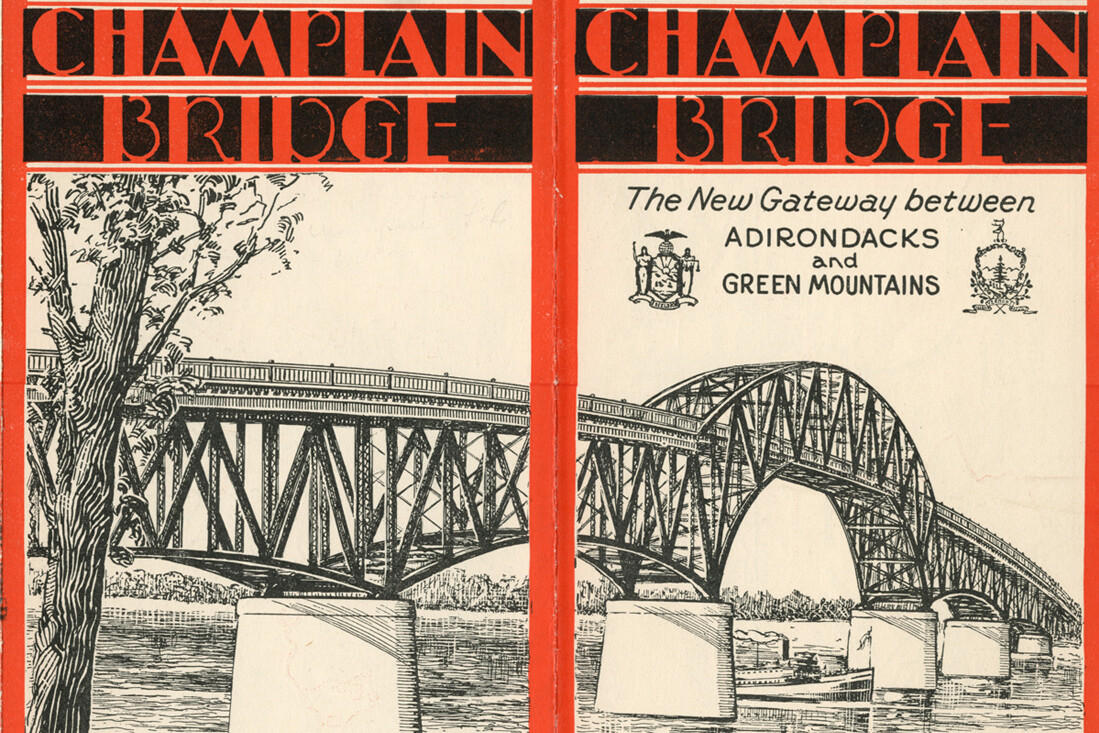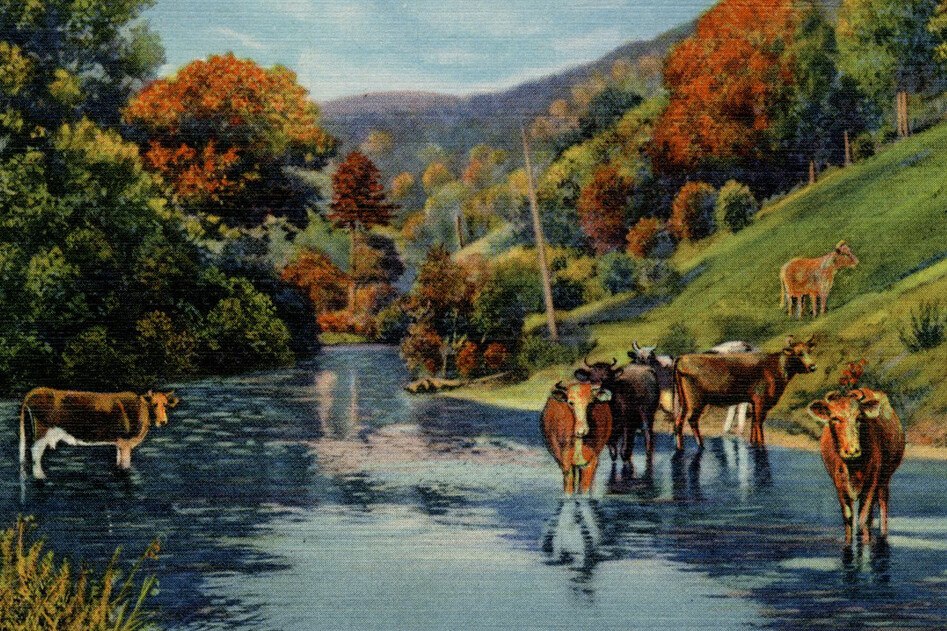1920s - The Land
How did Vermonters use the land in the 1920s?
In the summer of 1927, three young women hiked the Long Trail. Hilda Kurth, Kathleen Norris, and Catherine Robbins started in southern Vermont and walked north over mountain tops. In 32 days, they hiked the whole length of Vermont.
Photographers took pictures of them. Brochures with their photographs advertised the Long Trail. The Green Mountain Club wanted to show that women and men could enjoy hiking over mountains.
In the 1920s, tourism was an important industry(a type of business) in Vermont. Vacationers from other states came to hike and swim. They rented camps on lakes like Bomoseen and Memphremagog. Farm families let tourists stay in their houses. People from urban(city, not the country) places liked to visit the farms and villages in rural(country, not the city) Vermont.
Some tourists arrived by train. Others travelled by automobile. In the 1920s, most Vermont roads were dirt roads. Many Vermonters still used horses and carriages. But more people were buying cars. In 1920, there were almost 28,000 cars in Vermont. By 1930, there were over 60,000 automobiles. The number more than doubled in a decade(period of ten years).
A disaster in 1927 changed the land and transportation in Vermont. The horrible flood destroyed many bridges, roads, and railroads. After the storm, Vermonters built new bridges and fixed the roads. Workers paved hundreds of miles of roads. But they did not rebuild all the damaged railroad tracks. By the end of the 1920s, Vermonters used automobiles more than trains.
Farming was still an important industry in Vermont. Over half the farms in the state were dairy farms.
In the early 1900s, Vermont farmers used milk to make a lot of butter and cheese. These products stay fresh longer than milk. By the 1920s, changes in transportation led to faster shipping. Farmers could sell their milk to stores in Boston without it spoiling. They formed groups like Cabot Farmers’ Co-operative Creamery(a place for processing milk and for making butter and cheese) Company to work together to sell milk.
In the 1920s, the landscape with mountains, lakes, and farms brought many people to visit the state. A century later, tourism and dairy farming are still important industries in Vermont.
Thinking About History
Historians ask questions to think deeply about history.
How has Vermont stayed the same in the past 100 years? How has it changed?
Learn More
Follow the links below to explore related topics.
Learn more about the Flood of 1927
Listen to the program The Long Trail from Green Mountain Chronicles
Read the article A Footpath in the Wilderness from Green Mountaineer Magazine
Watch the video The Long Trail from This Place in History
Read the article New York Summers in Vermont: The Round Table at Neshobe Island from Historic Roots Magazine
Watch the video Lake Champlain Bridge from This Place in History
Watch the video Theodore Roosevelt International Highway from This Place in History
Look at maps of Vermont from the 1900s to see how the number of roads increases over the 20th century
Copy and paste this citation to show where you did your research.
Vermont Historical Society. "1920s - The Land." Vermont History Explorer. Accessed January 20, 2026. https://vermonthistoryexplorer.org/land-use-in-the-1920s


